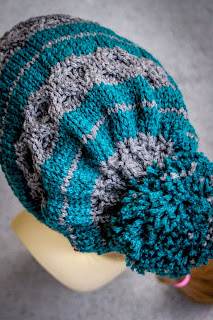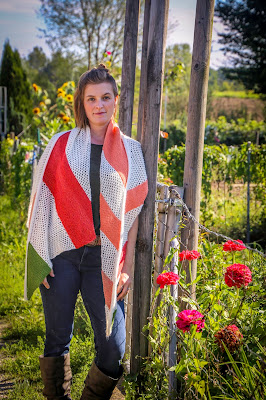 |
| Nikki's Slouch Hat pictured in size Adult Small/Medium |
Here's another pretty hat with a simple story: my friend Nikki was struggling to find a nice slouch hat here in Switzerland. Meanwhile, I had just bought some lovely yarns at my local store knowing that they would be *perfect* for something. And what do you know, a few conversations and copious swatching later, Nikki's Slouch Hat was born! With a combination of cabled panels (for squish) and simple striping (for ease), this hat has texture and charm galore!!!
Sizes: Adult Small/Medium (Adult Medium/Large)
Yarn: Lana Grossa Landlust Merino 120 (100% Virgin Wool; 131 yards [120 meters]/50 grams); #105 Taupe - one skein (two skeins) (color A), & #116 Petrol - one skein (both sizes) (color B) (side note: I didn't have a full 10% of my color A skein left over when I finished this hat, so I suppose it's possible that you'll need two skeins to finish the small size too. If you get in that situation, however, I suggest you fudge it and finish with color B, especially if you're gonna add a pompom!)
 |
| A look at the back. |
Notions: tapestry needle, stitch marker
Gauge: 14 stitches = 4 inches on size US 11 needles
So let's make a hat! Using your size US 10.5 needle and your color A yarn, then, cast on 76 stitches (80 stitches) loosely, place marker, and join in round. Then we'll work in a basic ribbing, as follows:
Ribbing Row: using color A, * k1, p1; rep from *
Knit this ribbing row until ribbing measures roughly 2" (2.5"-3"), and then transfer work to your size US 11 circular needle. Then, we'll work the following transition row. Notice the row is different for the two different sizes.




